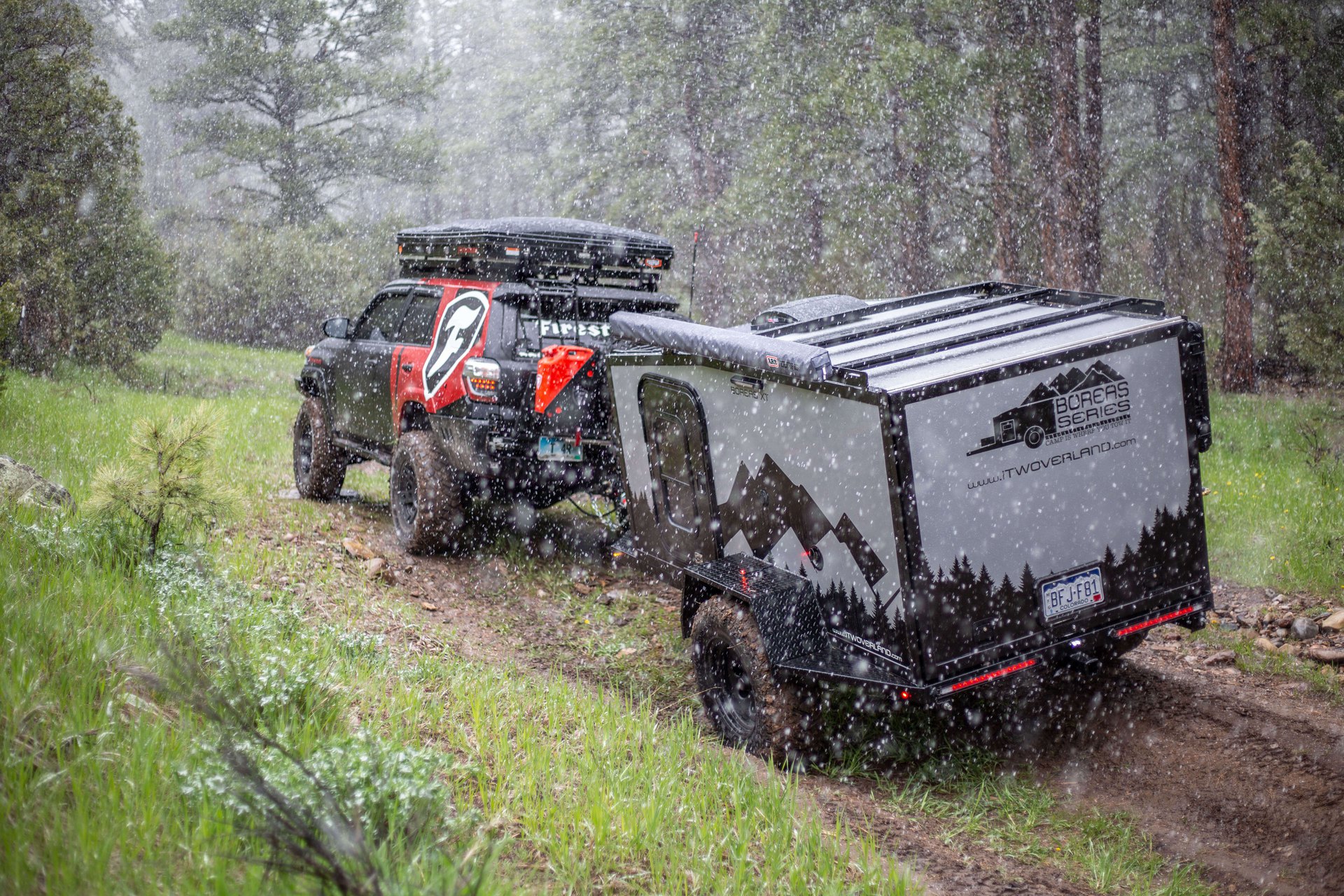
HOW TO WINTERIZE A CAMPER: A STEP-BY-STEP CHECKLIST
If you live in a colder climate, you probably do not get out as much during the colder months. During this time of year, it is time to park and winterize your camper. No matter which of the many trailer manufacturers your camper is from, you should not make the mistake of leaving your camper just anywhere. It is important to learn how to winterize a travel trailer so your trailer will be ready in the spring. If you are planning on storing your camper outdoors, you will have some additional steps to take.
Why You Should Be Winterizing the Camper Water System
If you want to know how to winterize a camper, know that the most important step is to remove the water from the system. If there is any water left in the system, it can freeze, causing the elbows or fittings to crack. This is because water expands when it freezes.
Each water system has its own specific guidelines, however, the most basica steps to winterize a travel trailer include turning off the water heater and draining and flushing the pipes. You should open all of the faucets while you drain it. You should then put antifreeze in the system, including in all of the drains.
One tip for properly winterizing a camper is to install a kit for bypassing the water heater. This allows you to avoid wasting antifreeze in the water heater.
Remove Your Trailer’s Battery
Cold weather can cause batteries to fail, so you should check the battery throughout the winter to ensure that it remains fully charged. If your climate is cold enough, your batteries may freeze. If this is the case, you should remove them and store them in a warmer spot. However, you should avoid concrete, because concrete can drain batteries.
Thoroughly Wash and Dry the Camper
If you take pride in your camper, the next step you should take to properly winterize your camper is washing it. This is preventative maintenance and it involves washing many surfaces, including:
- Exterior
- Tires
- Awnings
- Nooks and crannies
It is important to dry it after cleaning to avoid corrosion.
Another part of cleaning is to go through your travel trailer storage. Remove any items that do not belong or that you have not used in a while. If you have not used the items within the past few trips, you most likely do not need them. Taking out items that take up too much space will make your next trip more enjoyable.
Remove Items That Attract Pests
Now that you have cleaned the outside of your camper, it’s time to focus on the inside. The next thing on your camper winterizing agenda is removing food so insects will not come in. You should also open all the doors and drawers to ensure that there are no crumbs inside. You will also need to clear out the refrigerator and turn it off.
You will also want to ensure that there are no holes that pests can get into. If you find any holes, then you can use spray foam to fill them in. If you can see daylight through a hole, you should fill that in with the spray foam. Mice can get through a hole the size of a dime.
Take Care of Your Locks and Hinges
When you winterize your trailer, it is important to lubricate the hinges and locks. This will prevent the doors from creaking or jamming in the spring. A little bit of lubricant can go a long way in your camper.
Protect Your Camper’s Wheels From the Elements
Now that you have winterized your RV, you might be wondering how to store a camper trailer. If you are planning on storing your camper outdoors, you should cover up the wheels. This will protect them from extreme cold and UV rays. You can find covers that are designed for tires specifically to protect them from cracks.
Cover Your Camper Up Before the Cold
If you are storing your camper outdoors after the camper winterization, you should also cover it up. However, it is very important to find a quality, waterproof cover. This cover should also be made of a breathable material. It is important to get the right size so it will not be too large. You should not use a blue tarp, as it can trap moisture.
A Winterized Camper Is a Happy Camper
Knowing how and when to winterize your camper will save you both time and money. It is not the end of the world to replace broken pipes in your camper. However, avoiding the damage to your off road camper in the first place can make your first trip of the new season more enjoyable.